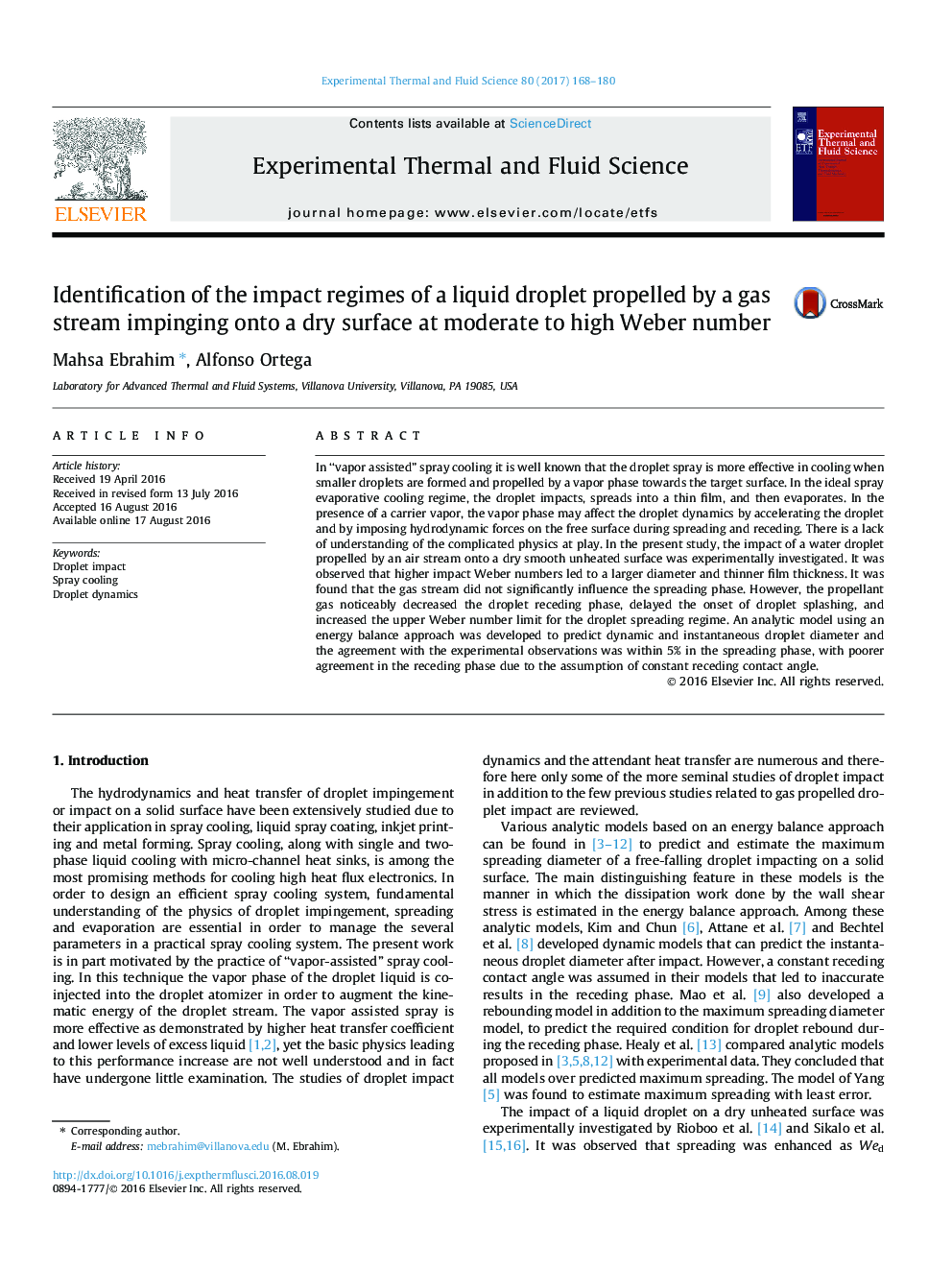| Article ID | Journal | Published Year | Pages | File Type |
|---|---|---|---|---|
| 7051952 | Experimental Thermal and Fluid Science | 2017 | 13 Pages |
Abstract
In “vapor assisted” spray cooling it is well known that the droplet spray is more effective in cooling when smaller droplets are formed and propelled by a vapor phase towards the target surface. In the ideal spray evaporative cooling regime, the droplet impacts, spreads into a thin film, and then evaporates. In the presence of a carrier vapor, the vapor phase may affect the droplet dynamics by accelerating the droplet and by imposing hydrodynamic forces on the free surface during spreading and receding. There is a lack of understanding of the complicated physics at play. In the present study, the impact of a water droplet propelled by an air stream onto a dry smooth unheated surface was experimentally investigated. It was observed that higher impact Weber numbers led to a larger diameter and thinner film thickness. It was found that the gas stream did not significantly influence the spreading phase. However, the propellant gas noticeably decreased the droplet receding phase, delayed the onset of droplet splashing, and increased the upper Weber number limit for the droplet spreading regime. An analytic model using an energy balance approach was developed to predict dynamic and instantaneous droplet diameter and the agreement with the experimental observations was within 5% in the spreading phase, with poorer agreement in the receding phase due to the assumption of constant receding contact angle.
Related Topics
Physical Sciences and Engineering
Chemical Engineering
Fluid Flow and Transfer Processes
Authors
Mahsa Ebrahim, Alfonso Ortega,
